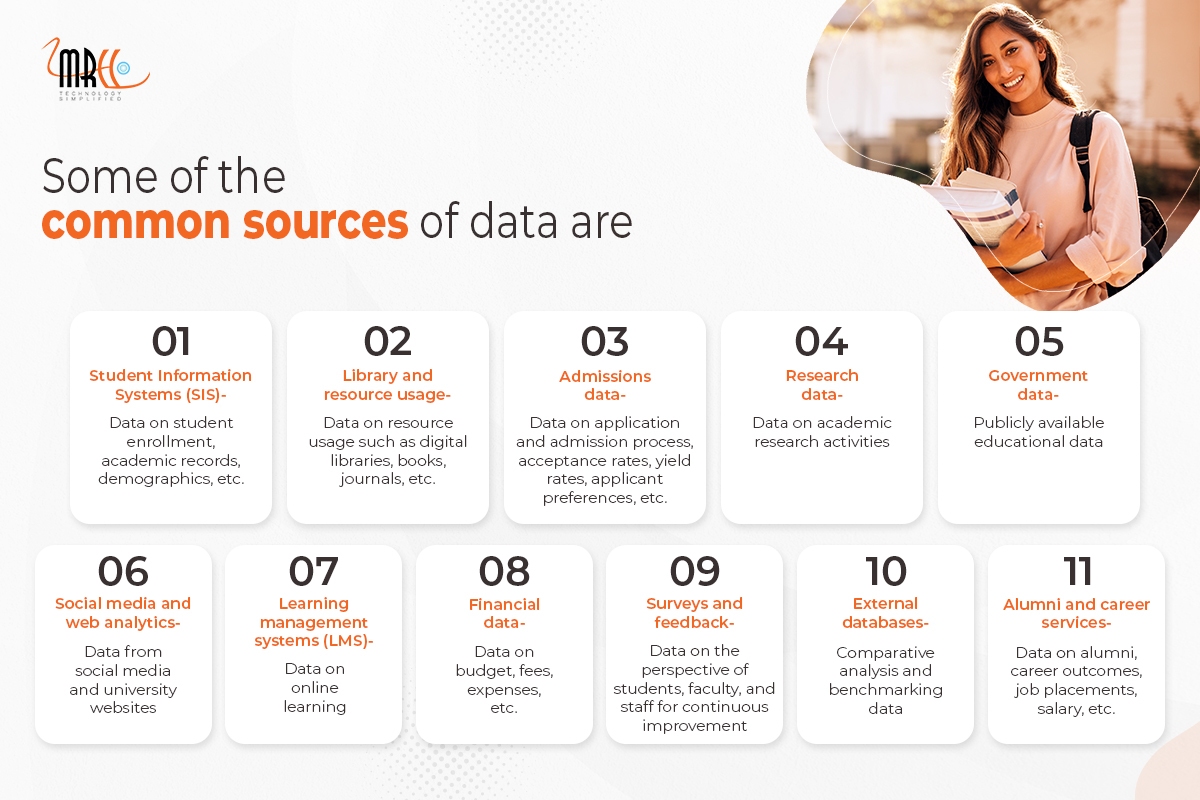Sep 22 2023
How Analytics Helps Universities Improve Their Student Performance

VP Learning Solutions

Sep 22 2023

VP Learning Solutions

The educational landscape is evolving rapidly with the introduction of artificial intelligence, machine learning, and data analytics technologies. Higher education universities prioritize student success and better student outcomes. Tailoring the learning experience to the unique needs of each student is paramount to staying ahead of the competition in the EdTech sector. How can universities impact student outcomes and prepare courses based on future trends?
Data analytics in higher education maximizes resource values and provides valuable insights into what drives student success. As per National Landscape Analysis, 89% of universities invest in predictive data and analytics studies to improve the student environment. Institutions investing in data analytics will become leaders in creating strategic course plans, executing them effectively, and analyzing the results for proactively improving student outcomes.

Predictive analysis uses big data, machine learning models, and AI algorithms to track and predict user behavior. Universities have large amounts of student data that can be leveraged with data analytics to track individual progress, analyze student performance, identify strengths and weaknesses of each student, and incorporate targeted interventions to improve overall academic performance.
Using historical data, the analytic tools empower education leaders to meet students’ needs and improve retention rates. Predictive models built on real-time data analytics will help universities prepare for the future, understanding industry trends and modifying course offerings to meet student demands. The real-time data is also useful for prescriptive analysis that can help universities take action right now to align with educational goals.
Data analytics enable universities to target their resources toward the highest-impact opportunities. This improves student engagement, satisfaction, and student access. Universities use their data to create mundane reports for submission to higher authorities. With the power of machine learning, these universities can unlock significant value from student data. Some benefits of data analytics for universities are:
Analyzing student academic performance, engagement, and attendance will identify at-risk students and the reasons for their disengagement. This data will help faculty to intervene early and offer academic counseling and support, improving student retention rates. Western Governors University in Utah increased the graduation rate for its four-year undergraduate program by 5% between 2018 and 2020 with predictive modeling.
Universities can assess the effectiveness of their curriculum with data analytics. Student performance data will provide information on areas of the curriculum that can be improved. Based on the analytics report, education leaders can fine-tune and update their curriculum to meet the industry talent gap and prepare students for better career prospects. Purdue University created an analytics-based IMPACT program to shift education to student-centered learning strategies that helped them create a flipped classroom model to increase student success.
Customizing learning content is mandatory to improve student engagement and knowledge retention. Data analytic models that analyze individual learning patterns can help personalize learning pathways. The Course Signals program of Purdue University sent out signals to students to track their progress and seek help to increase course completion rates.
Universities have to plan proper outreach campaigns to invite students to submit applications. Data analytics will help analyze student preferences and course demand to increase enrollment rates. A nonprofit university used a machine learning model to identify the top 10% of leads to plan outreach efforts to prioritize those leads that accounted for 90% of applications.
Data analytics enable universities to derive key data insights to help them make critical policy decisions. The university-wide policies are based on a key indicator: Drop, Fail, Withdraw, Incomplete (DFWI). The University of North Texas used analytics and data visualization to change policies and procedures to improve retention rates and save $450,000.
Universities can collect data from students, administrators, and faculties to continuously improve the efficiency of each department. Orion Starve WPI used data analytics to create self-serve dashboards that enabled autonomy for departments to make independent decisions for each department’s website content to improve ad hoc analyses.
Many internal and external sources are available for universities to gather big data. Often universities have large data silos gathered at different touch points of students.

Even though universities house large volumes of data, about 67% don’t use the data from their student information systems (SIS) effectively. Unused data will not provide any value, but effectively deriving insights from different raw data has many challenges. Some difficulties for universities are:
Advanced data analytics can help higher education institutions offer better student support, spur growth, and improve success. As more and more universities adopt online and digital learning practices, there will be more data to work with. However, building complex machine learning models to consume such data to provide meaningful information is a challenge with technology risks. Building a data-driven decision-making culture will help universities successfully implement futuristic changes and identify opportunities to beat the competition.

Leave A Reply
Your email address will not be published. Required fields are marked *